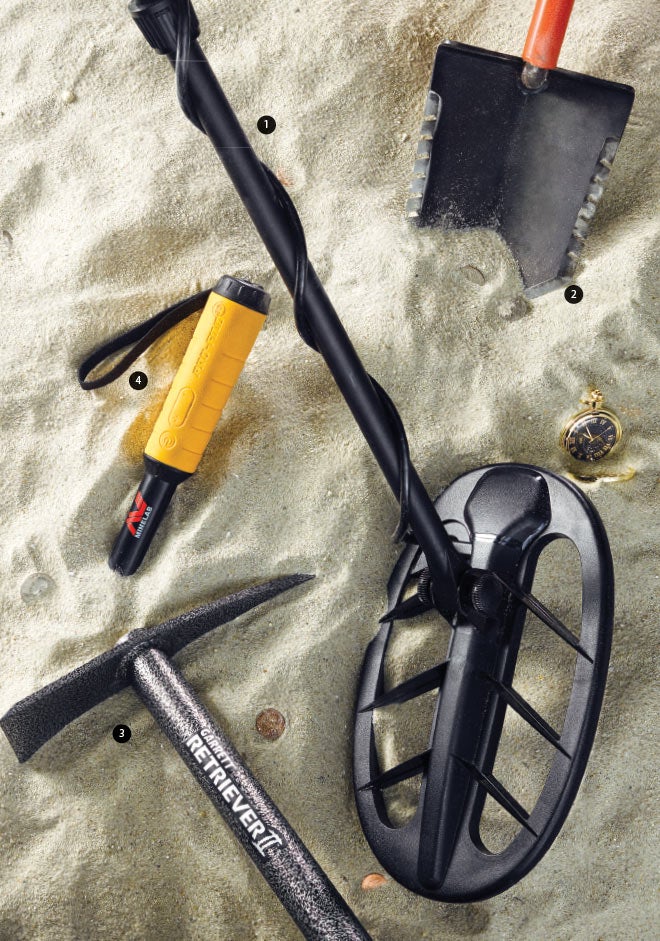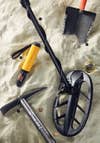Metal-detecting essentials for your next treasure hunt
You never know what you might find.

We may earn revenue from the products available on this page and participate in affiliate programs. Learn more ›
The lure of treasure hunting is not that of striking proverbial gold (although some still do search for it), but that you never know what historical holdovers the ground will produce. At the right local spot—an old battlefield or remote beach—these tools will allow you to burrow back in time.

1. Search the area
First, you need a metal detector. The Teknetics Patriot can spot booty up to a foot underground, and its display will estimate the object’s depth and material. Audible beeps let you know when metal distorts the electromagnetic field generated by the 11-inch head. $399
2. Dig a tidy hole
A hand trowel is great for small digs, but if you need to bust through roots or tough dirt, the serrated edges of the 3-foot-long Ground Hawg Shovel will help you cut. Four jabs with the 7.5-inch blade will create a cube-shaped plug of earth that’s easy to replace. $70
3. Be more aggressive
Rocky terrain requires more hardcore tools like the Garrett Retriever II Pick. At 19 inches long, the steel pickaxe features a flat blade for moving earth and a point for cutting. A rare-earth magnet in the center of the head will grab metal objects underwater. $59
4. Get accuracy
Once you start digging, use the 9.3-inch Minelab Pro-Find 35 detector to search the hole. The probe creates a 360-degree electromagnetic field with adjustable power that can sense when it’s within inches of loot. Haptic and audio alerts intensify as you get closer to your treasure. $149
Editor’s note: Be sure you’re following all laws and regulations when metal detecting, and don’t forget to obtain permission when doing so on private property. Reading these guidelines is a good place to start.
This article was originally published in the September/October 2017 Mysteries of Time and Space issue of Popular Science.
